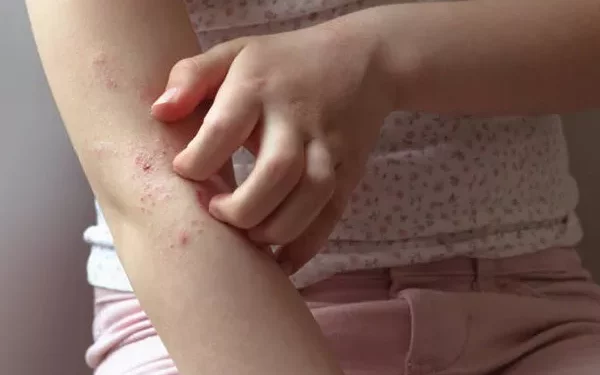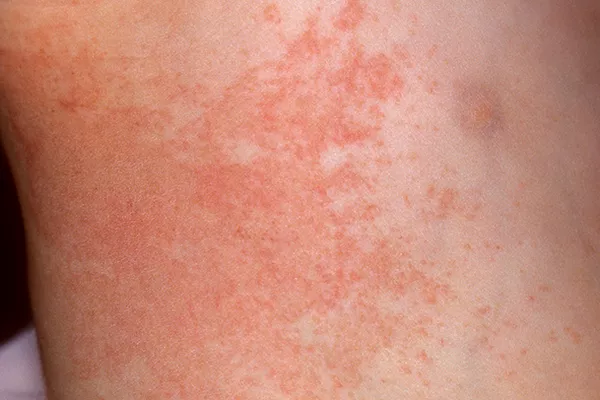Eczema, or atopic dermatitis, is a common skin condition characterized by itchy, inflamed patches of skin. Managing eczema involves a multifaceted approach, often including topical treatments, moisturizers, and lifestyle adjustments. In recent years, bleach baths have emerged as a potential complementary therapy for individuals struggling to manage eczema symptoms. This article explores the rationale behind bleach baths, their effectiveness, and how they can be safely integrated into eczema treatment regimens.
What is a Bleach Bath?
A bleach bath involves adding a small amount of bleach to warm bath water. The idea behind this treatment is that the bleach can reduce bacterial colonization on the skin, which is often higher in individuals with eczema, particularly those prone to recurrent skin infections. Bleach baths are not meant to be used as the sole treatment for eczema but rather as an adjunct to regular eczema management.
The typical concentration of bleach used in a bleach bath is low—usually about half a cup (approximately 120 milliliters) of household bleach in a full standard bathtub (40 gallons or approximately 150 liters) of water. This dilution is crucial to ensure that the bleach does not irritate or damage the skin.
How Does a Bleach Bath Work?
The primary mechanism of action behind bleach baths in managing eczema lies in their antibacterial properties. Sodium hypochlorite, the active ingredient in bleach, is effective in reducing the burden of Staphylococcus aureus bacteria on the skin. Staphylococcus aureus is a common bacterium that can exacerbate eczema symptoms by triggering inflammation and infection.
When a person with eczema soaks in a properly diluted bleach bath, the bleach acts to reduce the bacterial load on the skin, potentially decreasing the frequency of skin infections and subsequent eczema flares. Additionally, bleach may have mild anti-inflammatory effects, which can provide relief from itching and redness associated with eczema.
Safety Considerations
While bleach baths can be beneficial for managing eczema symptoms, it’s crucial to emphasize safety when using this treatment method. Here are some important considerations:
1. Proper Dilution: Always follow precise measurements when adding bleach to bathwater. The recommended dilution is half a cup of bleach in a full bathtub of water. Using more bleach than recommended can cause skin irritation and should be avoided.
2. Avoiding Eye and Mouth Contact: Take care to prevent bleach from getting into your eyes, mouth, or open wounds. If accidental exposure occurs, rinse the affected area thoroughly with water.
3. Skin Sensitivity: Some individuals may be more sensitive to bleach than others. If you experience increased redness, itching, or discomfort after a bleach bath, discontinue use and consult a dermatologist.
4. Frequency of Use: Bleach baths should not be used too frequently. Typically, they are recommended 2-3 times per week for a few weeks under the guidance of a healthcare professional.
5. Moisturize Afterward: After taking a bleach bath, it’s important to apply a gentle, fragrance-free moisturizer to keep the skin hydrated and prevent dryness.
Who Can Benefit from Bleach Baths?
Bleach baths are often recommended for individuals with moderate to severe eczema who are prone to recurrent skin infections. This includes both children and adults. However, it’s essential to consult a healthcare provider before starting bleach baths, especially for children and those with sensitive skin or other medical conditions.
Effectiveness of Bleach Baths
Research on the effectiveness of bleach baths in managing eczema has shown promising results. Several studies have demonstrated that bleach baths can help reduce the severity and frequency of eczema flares, particularly in individuals with recurrent skin infections.
A study published in the Journal of Allergy and Clinical Immunology found that bleach baths significantly reduced the amount of bacteria on the skin and improved eczema symptoms in children with moderate to severe eczema. Another study in Pediatric Dermatology reported similar findings, highlighting the potential benefits of bleach baths in managing eczema.
Integrating Bleach Baths into Eczema Care
If you and your healthcare provider decide to incorporate bleach baths into your eczema treatment plan, follow these steps for safe and effective implementation:
1. Consultation: Discuss bleach baths with your dermatologist or healthcare provider to determine if this treatment is suitable for you or your child’s specific condition.
2. Instructions: Obtain precise instructions on how to prepare and perform bleach baths safely. This includes the recommended bleach concentration and frequency of use.
3. Monitoring: Keep track of your skin’s response to bleach baths. If you notice any adverse effects or worsening of symptoms, inform your healthcare provider promptly.
4. Combination Therapy: Use bleach baths as part of a comprehensive eczema management strategy that includes moisturizers, topical steroids or other prescribed medications, and lifestyle modifications.
5. Educate Yourself: Learn about proper skin care techniques and eczema triggers to complement the benefits of bleach baths.
Conclusion
In summary, bleach baths can be a valuable adjunct therapy for managing eczema, especially in individuals prone to skin infections. When used correctly and under the guidance of a healthcare professional, bleach baths can help reduce bacterial colonization on the skin, alleviate eczema symptoms, and decrease the frequency of flares. However, it’s essential to approach bleach baths with caution, ensuring proper dilution and monitoring for any adverse effects.
If you or someone you know is struggling with eczema despite conventional treatments, consider discussing the potential benefits of bleach baths with a dermatologist or healthcare provider. With appropriate guidance and safety measures, bleach baths can be a safe and effective addition to an eczema management plan, improving the quality of life for those affected by this chronic skin condition.
Related Topics:
What Autoimmune Diseases Can Seborrheic Dermatitis Cause?
Understanding Eczema Flaking: Causes, Symptoms, and Management

























